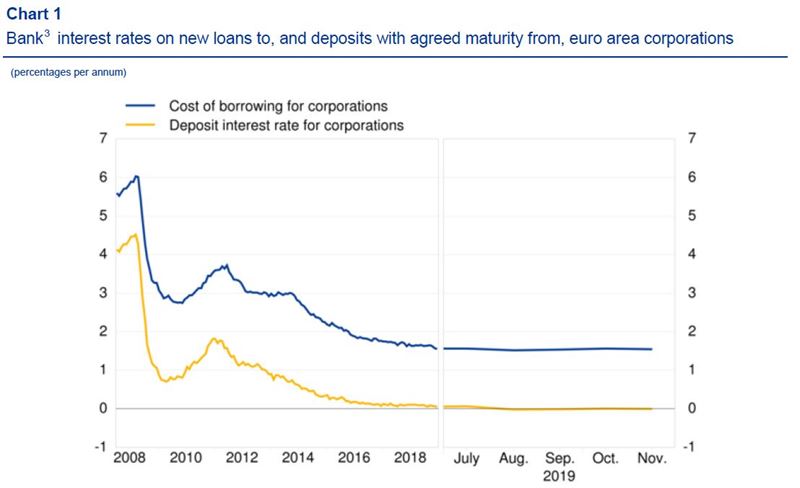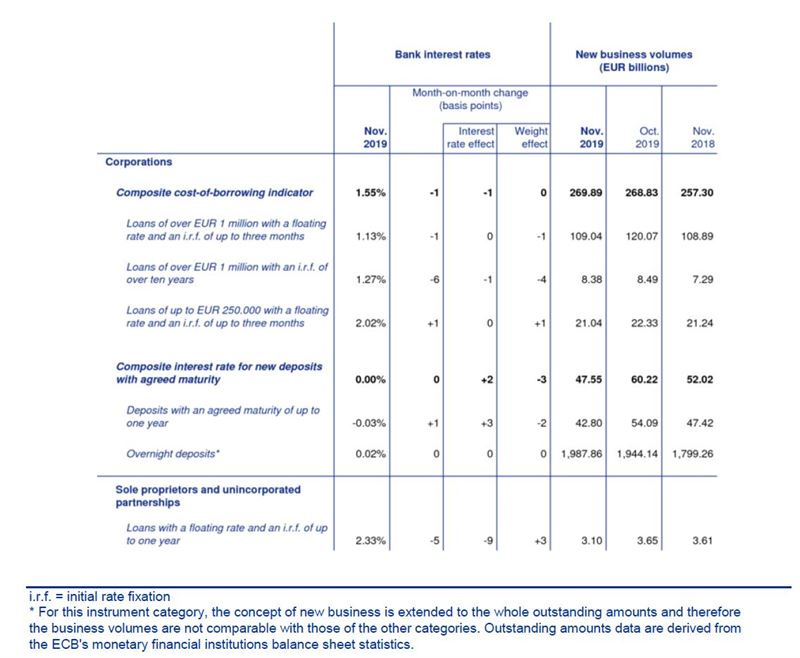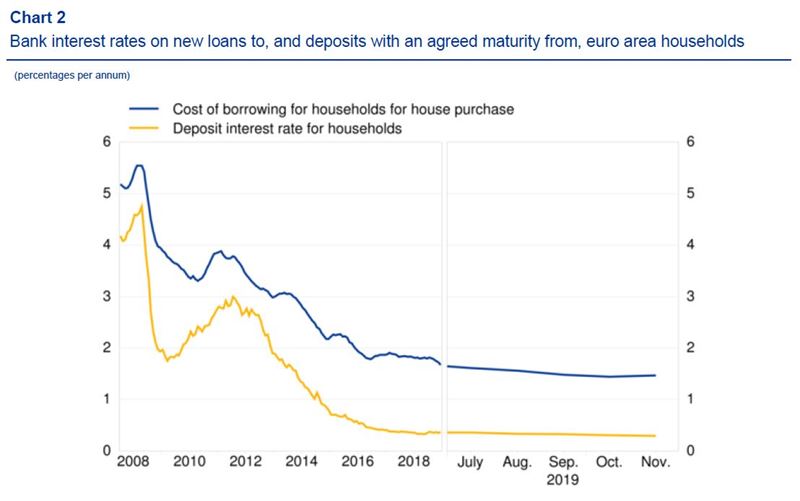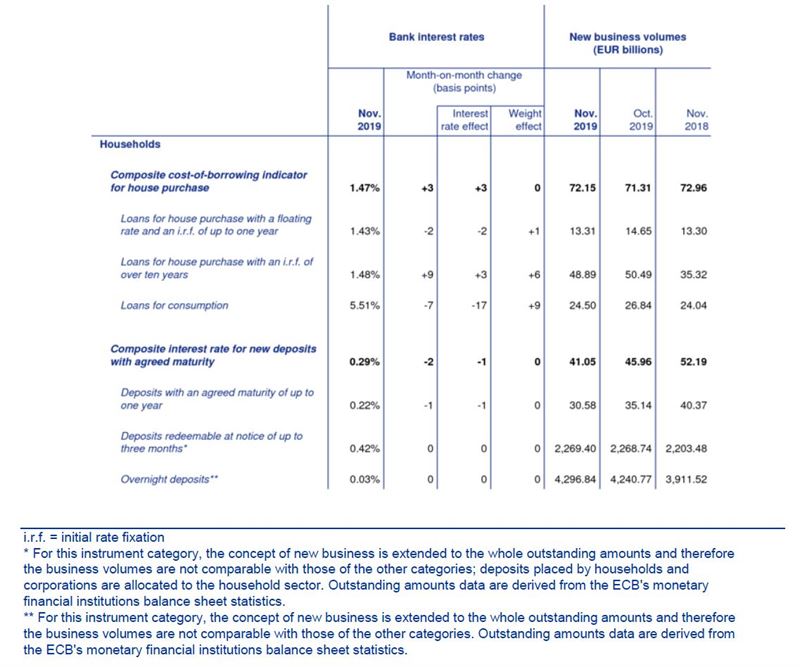The composite cost-of-borrowing indicators for new loans to corporations[1] and for new loans to households for house purchase[2] remained broadly unchanged in November 2019, at 1.55% and 1.47%, respectively. In the same month, the euro area composite interest rate for new deposits with agreed maturity from corporations showed no change at 0.00%, while the one for new deposits with agreed maturity from households remained broadly unchanged at 0.29%.
Bank interest rates for corporations

Data for cost of borrowing and deposit interest rate for corporations
The composite cost-of-borrowing indicator, which combines interest rates on all loans to corporations, remained broadly unchanged in November 2019. The interest rate on new loans of over €1 million with a floating rate and an initial rate fixation period of up to three months remained broadly unchanged at 1.13%. The rate for new loans of the same size with an initial rate fixation period of over ten years decreased by 6 basis points to 1.27%, mainly driven by the weight effect. In the case of new loans of up to €250,000 with a floating rate and an initial rate fixation period of up to three months, the average rate charged remained broadly unchanged at 2.02%.
As regards new deposit agreements, the interest rate on deposits from corporations with an agreed maturity of up to one year stayed more or less constant at -0.03% in November 2019. The interest rate on overnight deposits from corporations stayed constant at 0.02%.
The interest rate on new loans to sole proprietors and unincorporated partnerships with a floating rate and an initial rate fixation period of up to one year decreased by 5 basis points to 2.33%.This decrease was driven by the interest rate effect.
Data for bank interest rates for corporations

Bank interest rates for households

Data for cost of borrowing and deposit interest rate for households
The composite cost-of-borrowing indicator, which combines interest rates on all loans to households for house purchase, remained broadly unchanged in November 2019. The interest rate on loans for house purchase with a floating rate and an initial rate fixation period of up to one year remained broadly unchanged at 1.43%, while the interest rate on housing loans with an initial rate fixation period of over ten years rose by 9 basis points to 1.48%, mainly driven by the weight effect. In the same period, the interest rate on new loans to households for consumption fell by 7 basis points to 5.51%. This decrease was driven by the interest rate effect which outweighed the corresponding weight effect.
As regards new deposits from households, the interest rate on deposits with an agreed maturity of up to one year remained broadly unchanged in November 2019, at 0.22%. The interest rate on deposits redeemable at three months’ notice and on overnight deposits showed no change at 0.42% and 0.03%, respectively.
Data for bank interest rates for households

[1] In this press release “corporations” refers to non-financial corporations (sector S.11 in the European System of Accounts 2010, or ESA 2010).
[2] In this press release “households” refers to households and non-profit institutions serving households (ESA 2010 sectors S.14 and S.15).
[3] In this press release “banks” refers to monetary financial institutions except central banks and money market funds (ESA 2010 sectors S.122).
Further information
Tables containing further breakdowns of bank interest rate statistics, including the composite cost-of-borrowing indicators for all euro area countries, are available from the ECB’s Statistical Data Warehouse. A subset is visually presented in “Our statistics” at www.euro-area-statistics.org. The full set of bank interest rate statistics for both the euro area and individual countries can be downloaded from SDW. More information, including the release calendar, is available under “Bank interest rates” in the statistics section of the ECB’s website.
pixabay.com

















